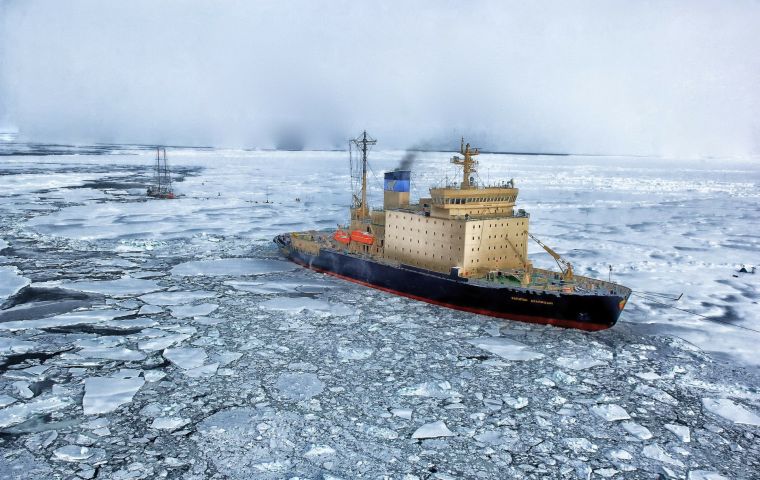MercoPress. South Atlantic News Agency
Ban on Heavy Fuel Oil shipping in Arctic waters has become effective
 In colder waters, experts say, the fuel does not break down but sinks in lumps that linger in sediments, threatening fragile ecosystems.
In colder waters, experts say, the fuel does not break down but sinks in lumps that linger in sediments, threatening fragile ecosystems. An international ban starting July first, on the use of Heavy Fuel Oil, HFO, in the Arctic region adopted by the United Nations maritime body, the International Maritime Organization (IMO), at the Marine Environment Protection Committee, in June 2021, has come into effect aiming to protect the vulnerable waters from the risk of oil spills.
However, the ban includes a transitional arrangement that gives shipping companies time to adapt while simultaneously protecting the Arctic from oil spills. It allows ships with protected fuel tanks to use HFO until 2029.
As explained, the transitional provision applies to ships built after 2010 that meet the international MARPOL regulations with protected fuel tanks. These ships are designed with an extra protective barrier around their fuel tanks, significantly reducing the risk of oil spills in the event of an accident.
“This ban is a significant step towards protecting the Arctic. By allowing ships with protected fuel tanks to continue using HFO until 2029, we ensure that shipping can adapt to the new rules in a practical and responsible manner while simultaneously protecting the fragile environment in the Arctic,” Nina Prost, Director of Climate, Environment, and Safety at Danish Shipping, commented.
Specifically, the prohibition will cover the use and carriage for use as fuel of oils having a density at 15°C higher than 900 kg/m3 or a kinematic viscosity at 50°C higher than 180 mm2/s. Ships engaged in securing the safety of ships, or in search and rescue operations, and ships dedicated to oil spill preparedness and response would be exempted.
The sludge-like fuel is almost impossible to clean up if a spill occurs. In colder waters, experts say, the fuel does not break down but sinks in lumps that linger in sediments, threatening fragile ecosystems.
In climate terms, this oil is seen as particularly dangerous, not just producing large amounts of planet-warming gas when burned, but also spewing out sooty particles called black carbon.
“The black carbon is creating the sort of double whammy impact in the Arctic,” said Dr Sian Prior, from the Clean Arctic Alliance group of campaigners. “It's attracting heat while it's in the atmosphere, and then it settles onto the snow and ice and is speeding up the melting as well.” The HFO was banned from use or transport in the Antarctic in 2011.
As the ban comes into force today, July first, the Clean Arctic Alliance has called on IMO member states, particularly Arctic coastal countries, to implement the Arctic HFO ban and enforce it fully with immediate effect – without resorting to loopholes.
The alliance has also called on the IMO to extend the area covered by the ban to include all Arctic waters north of 60°N, and to enact regulations to reduce black carbon emissions from shipping, which would help reverse the impacts of climate warming in the Arctic, through the use of cleaner fuels and diesel particulate filters.
Recent Arctic Council studies of ship activity in the Arctic have shown an increase of 37% between 2013 and 2023 and a 111% increase in total distance traveled over the same period.




Top Comments
Disclaimer & comment rulesCommenting for this story is now closed.
If you have a Facebook account, become a fan and comment on our Facebook Page!